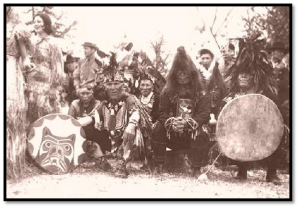The Comanche are a Native American tribe from the Great Plains whose historic territory, In the Comanche Indians History, comprised of present-day New Mexico, southeastern Colorado, southwestern Kansas, western Oklahoma, and the majority of northwest Texas.
Comanche Indians History

The Comanche’s were very ferocious warriors who lived on the Southern Plains. The Southern Great Plains stretched out from the state of Nebraska towards the northern part of Texas. See the map. The Comanche Indians History are one of the most significant historic Indian cultures from Texas. The Comanche’s were much more than just warriors. According to old Spanish records and some other notable sources, they were also very good traders.
The Spanish used to hold trade fairs in the cities of Taos and Santa Fe, the present-day New Mexico. Records from trade fairs in old Taos and Santa Fe described the Comanche’s at these trade fairs. They were very well-dressed. In the Comanche Indians History, Comanche leaders often wore fine European clothes, with many silver pieces of jewelry and fine leather shoes. And they had money. They would come to trade in organized groups.
Language of Comanche Indians
There is always one Comanche in the groups who are able to speak Spanish, French, and four or five Indian languages. The group always had a very skilled leader who is also a trader and diplomat. The problem was most of what they had to sell or trade were stuff they stole.
Facts of Comanche Indians Life
They sold the stolen horses and women and children they had kidnapped. The relatives of the women and children came to these fairs to purchase them back. This kidnapping for ransom would later get the Comanche in huge trouble from the American people who are much less tolerant of it than the Spanish or Pueblo Indians were.
Comanche leaders
They were very well-dressed. The Comanche leaders often wore fine European clothes, with many silver pieces of jewelry and fine leather shoes. And they had money. They would come to trade in organized groups. There is always one Comanche in the groups who are able to speak Spanish, French, and four or five Indian languages. The group always had a very skilled leader who is also a trader and diplomat.
The problem was most of what they had to sell or trade were stuff they stole. They sold the stolen horses and women and children they had kidnapped. The relatives of the women and children came to these fairs to purchase them back. This kidnapping for ransom would later get the Comanche in huge trouble from the American people who are much less tolerant of it than the Spanish or Pueblo Indians were.
The Comanche Nation is headquartered in Lawton, Oklahoma. Their tribal jurisdictional area is located in Caddo, Comanche, Stephens, Cotton, Tillman, Jefferson, Kiowa, and Grady Counties. Membership of the tribe requires a 1/8 blood quantum (equivalent to one great-grandparent).
The tribe operates its own housing authority and issues tribal vehicle tags. They have their own Commission for Higher Education, which is the primary department for awarding scholarships and financial aid for members’ college educations. Additionally, they primarily control the Comanche Nation College in Lawton, Oklahoma. They owned10smoke shops and 4 casinos. These casinos are the Comanche Nation Casino in Lawton, the Comanche Red River Casino in Devol, Comanche Spur in Elgin, and Comanche Star Casino in Walters, Oklahoma.
As of July 2016, the provisional Tribal Chairman is Susan Cothren, the Tribes Administrator is Jimmy Arterberry, and the Comanche Business Committee members are Susan Cothren, Jerry Tahlequah, Johnny Poahway, Harry Mithlo and Clyde Narcomey
The Comanche’s were almost as new to Texas the same as the Spanish. They came from the north of Wyoming. The Comanche’s were once part of the Shoshone Indians. The Comanche and the Shoshone languages are always almost the same. Bands of Comanche’s began moving south a long time ago. By the 1700s, they appeared in the Texas panhandle and in New Mexico.
comanche culture, Comanche warriors, Comanche vs Apache, Comanche government, Comanche weapons, what does Comanche mean, Comanche traditions, Comanche brutality
